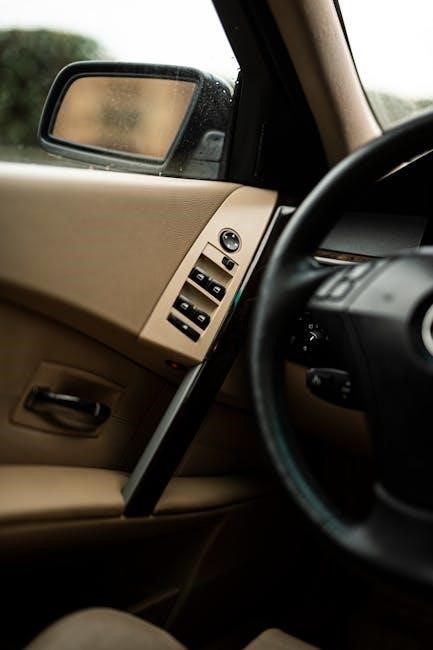The Chevy Silverado is a robust and reliable truck, but some models, particularly those with manual 4-wheel drive systems, have been known to experience issues with the 4WD system failing to engage. Owners have reported that when attempting to switch to 4WD, the indicator light blinks and returns to 2WD, often accompanied by a clicking sound but no visible engagement of the system. This problem can stem from various components, including the transfer case, front actuator, or electrical connections. Understanding the root cause is essential for effective troubleshooting and repair.

Common Symptoms
When the manual 4-wheel drive system in a Chevy Silverado fails to engage, several symptoms may become apparent to the driver. One of the most common indicators is the 4WD light on the dashboard blinking or failing to illuminate when the system is activated. In some cases, the light may remain solid in 2WD mode, signaling that the system is not responding to the manual shift command. Additionally, drivers often report hearing a clicking sound when attempting to engage 4WD, but the system does not transition into four-wheel drive.
Another frequent issue is the inability of the front wheels to engage, even when the driver has manually selected 4WD. This can be verified by observing whether the front driveshaft is turning when the system is supposedly active. If the front axle does not engage, the vehicle will continue to operate in 2WD, limiting traction and control, especially in off-road or slippery conditions.
Some owners have also noted that the “Service 4 Wheel Drive” warning light appears on the instrument panel, indicating a problem within the system. This warning light can be triggered by a variety of issues, including faulty sensors, electrical malfunctions, or mechanical failures in the transfer case or actuator.
In certain cases, the 4WD system may become stuck in a specific mode, such as 2WD low, and refuse to shift back to standard 2WD or 4WD high. This can lead to reduced performance and fuel efficiency, as the vehicle may not be operating in the intended gear for the current driving conditions.
Across various model years, including the 2003, 2006, 2011, and 2015 Silverados, drivers have consistently reported these symptoms when experiencing 4WD engagement issues. These problems are not isolated to specific models or years, suggesting a recurring challenge with the manual 4WD system in the Silverado lineup. By recognizing these symptoms, owners can take the first steps toward diagnosing and addressing the underlying cause of the malfunction.

Possible Causes
The failure of the manual 4-wheel drive system in a Chevy Silverado to engage can be attributed to a variety of potential causes, ranging from mechanical failures to electrical issues. One of the most common culprits is a faulty front actuator, which is responsible for engaging and disengaging the front axle. Over time, the actuator can wear out or sustain damage, preventing the front wheels from engaging when 4WD is selected. In some cases, the actuator may operate but fail to properly lock the front axle into place, resulting in a lack of traction in the front wheels.
Another possible cause is a malfunction in the transfer case or its associated components. The transfer case is the heart of the 4WD system, distributing power between the front and rear axles. If the transfer case is damaged or its gears are worn, it may fail to engage the front driveshaft, leaving the vehicle stuck in 2WD. Additionally, low or dirty fluid levels in the transfer case can impair its ability to function correctly, leading to engagement issues.
Electrical problems are another frequent cause of 4WD system failures. The manual shift system relies on a complex network of sensors, switches, and wiring to communicate between the driver and the transfer case. If there is a break or corrosion in the wiring, or if the 4WD selector switch is faulty, the system may not receive the proper signal to engage. Similarly, a faulty transfer case control module (TCCM) can disrupt communication between the vehicle’s computer and the 4WD system, preventing it from activating.
Some owners have also reported issues with the front driveshaft or axle itself. If the driveshaft is damaged or the universal joints are worn, it may prevent the front wheels from receiving power even when the system is engaged. Additionally, a stuck or damaged shift fork in the transfer case can prevent the system from transitioning into 4WD, regardless of the driver’s input.
In certain cases, the problem may be related to the vehicle’s grounding system. Corrosion or damage to the ground wires can disrupt the electrical signals required to engage the 4WD system. This is often an overlooked but relatively simple issue to resolve, as cleaning or replacing the ground connections can restore proper functionality.
Lastly, some models of the Chevy Silverado have been known to experience issues with the vacuum actuator system, particularly in older vehicles. A leak in the vacuum lines or a faulty vacuum switch can prevent the front axle from engaging, leaving the vehicle in 2WD mode. While this issue is less common in newer models, it remains a potential cause in older Silverados with manual 4WD systems.
By understanding these potential causes, owners can narrow down the issue and take the first steps toward diagnosing and repairing their 4WD system.

Diagnostic Steps
Diagnosing why the manual 4-wheel drive system in your Chevy Silverado won’t engage requires a systematic approach to identify the root cause. Whether you’re a seasoned mechanic or a DIY enthusiast, following these steps can help pinpoint the issue and guide the repair process.

Check the Dashboard Indicators
Start by observing the dashboard lights. If the 4WD light blinks or remains illuminated, it may indicate a problem with the system. Consult your owner’s manual to understand the meaning of the specific light patterns or codes displayed. Some models may require the use of an OBD-II scanner to retrieve trouble codes related to the 4WD system.
Test the System in a Safe Environment
Find a safe, open area to test the 4WD system. Ensure the vehicle is on level ground and in neutral or park before attempting to engage 4WD. Press the 4WD button or move the selector lever to the 4HI or 4LO position. Listen for any unusual noises or vibrations that might indicate the system is attempting to engage but failing to do so.
Inspect the Front Axle and Driveshaft
Raise the vehicle using jack stands to inspect the front axle and driveshaft. With the transmission in neutral, manually rotate the front wheels while observing the driveshaft. If the driveshaft does not rotate when 4WD is engaged, it suggests a disconnection or failure in the transfer case or front axle engagement mechanism.
Examine the Transfer Case
The transfer case is a critical component of the 4WD system. Check for any signs of physical damage, leaks, or worn seals. If the transfer case fluid is dirty or low, it can impair the system’s ability to engage properly. Replace the fluid if necessary and ensure the transfer case is functioning as intended.
Test the Electrical Circuit
The manual 4WD system relies on a network of sensors, switches, and wiring. Check the fuses and relays associated with the 4WD system in the fuse box. If a fuse is blown or a relay is faulty, replace it and test the system again. Use a multimeter to verify power is reaching the transfer case actuator and other critical components.
Inspect the Actuator and Solenoids
The front actuator and solenoids are common failure points in manual 4WD systems. Remove the actuator and test its operation by applying power directly to it. If it fails to engage, replace it with a new or rebuilt unit. Similarly, inspect the solenoids for any signs of damage or corrosion.
Consult a Wiring Diagram
If electrical issues persist, consult a wiring diagram for your specific Silverado model to trace the circuit. Look for any breaks, corrosion, or loose connections in the wiring harness that could disrupt communication between the control module and the transfer case.
Test the Transfer Case Control Module (TCCM)
In some models, the TCCM can malfunction and prevent the 4WD system from engaging. If you suspect the TCCM is faulty, replace it with an OEM or aftermarket unit. Ensure the new module is properly programmed and calibrated for your vehicle.
Perform a System Reset
Some Silverado models may require a system reset after repairs are made. Place the transmission in neutral, engage and disengage 4WD several times, and then test the system under load to ensure it functions correctly.
By following these diagnostic steps, you can identify the underlying issue preventing your Chevy Silverado’s 4-wheel drive system from engaging. Whether the problem is mechanical, electrical, or related to the transfer case, a thorough inspection and testing process will guide you toward the necessary repairs.

Solutions
Addressing the issue of a non-engaging 4-wheel drive system in your Chevy Silverado requires a combination of diagnostic checks and targeted repairs. By systematically identifying and resolving the root cause, you can restore functionality to your truck’s 4WD system. Below are the potential solutions to this common problem:
Replace the Transfer Case Actuator
One of the most common fixes for a malfunctioning 4WD system is replacing the transfer case actuator. This component is responsible for engaging and disengaging the front axle. If the actuator is faulty, it can prevent the system from switching modes. Remove the actuator, test it for proper operation, and replace it if necessary. Ensure the new actuator is compatible with your Silverado model.
Repair or Replace the Solenoids
Solenoids play a crucial role in controlling the flow of fluid within the transfer case. If they become corroded or damaged, they can disrupt the 4WD system’s operation. Inspect the solenoids for any signs of wear or corrosion. Clean or replace them as needed to restore proper function. In some cases, replacing the solenoid pack entirely may be the most efficient solution.
Address Electrical Issues
Electrical problems are a frequent cause of 4WD system failures. Start by checking the fuses and relays associated with the 4WD system in your Silverado’s fuse box. If a fuse is blown or a relay is malfunctioning, replace it with the correct specifications. Use a multimeter to verify that power is reaching the transfer case actuator and other critical components. Repair any damaged or corroded wiring to ensure proper communication between the control module and the transfer case.
Replace the Transfer Case Control Module (TCCM)
The TCCM is the brain of the 4WD system, controlling the engagement and disengagement of the transfer case. If this module fails, it can prevent the system from functioning altogether. If you suspect the TCCM is faulty, replace it with a new or refurbished unit. Ensure the replacement module is compatible with your Silverado’s make and model year. After installation, follow the manufacturer’s instructions to reset or reprogram the module if necessary.
Check and Replace the Front Axle Engagement Mechanism
The front axle engagement mechanism is essential for properly distributing power to the front wheels when 4WD is engaged. If this mechanism is damaged or worn out, it can prevent the front wheels from engaging. Inspect the component for any signs of wear or damage and replace it if necessary. Ensure all components are properly aligned and secured after installation.
Reset the 4WD System
After performing any repairs, it may be necessary to reset the 4WD system. Place the transmission in neutral and cycle the 4WD button or lever several times to ensure the system recalibrates properly. If the system still does not engage, consult your owner’s manual or a repair manual for specific instructions on resetting the system for your particular Silverado model.
By implementing these solutions, you can resolve the issue of your Chevy Silverado’s 4-wheel drive system failing to engage. Whether the problem lies in the transfer case, electrical system, or control module, addressing it promptly will ensure your truck operates at peak performance in all driving conditions.

Advanced Troubleshooting
When basic troubleshooting steps fail to resolve the issue of your Chevy Silverado’s 4-wheel drive system not engaging, it may be necessary to delve deeper into the system’s components and their interactions; Advanced troubleshooting involves a more detailed examination of the electrical, mechanical, and electronic systems that control the 4WD functionality. Below are advanced steps to help diagnose and potentially resolve the problem:
Transfer Case Control Module (TCCM) Testing
The TCCM is the electronic brain responsible for controlling the transfer case’s operations; If the TCCM is faulty, it can prevent the 4WD system from engaging. To test the TCCM, use a scan tool to monitor its operation and check for any error codes stored in the module’s memory. If the TCCM is malfunctioning, it may need to be reprogrammed or replaced. Ensure any replacement module is compatible with your Silverado’s specific make and model year.
Front Axle Engagement Mechanism Inspection
The front axle engagement mechanism is critical for proper 4WD operation. If the mechanism is damaged or worn, the front wheels may fail to engage. Remove the front axle shaft and inspect the engagement teeth for wear or damage. If damage is found, replace the affected components. Additionally, check the vacuum lines and actuators connected to the front axle for leaks or blockages, as these can prevent proper engagement.
Wiring and Connector Examination
Electrical issues can often be traced to faulty wiring or connectors. Use a wiring diagram specific to your Silverado to identify the circuits responsible for 4WD operation. Inspect the wiring harness for signs of damage, corrosion, or chafing. Pay particular attention to the connectors at the transfer case, actuator, and TCCM. Use a multimeter to test for continuity and ensure power is reaching the appropriate components when the 4WD button is pressed.
Transfer Case Disassembly and Inspection
In some cases, the issue may lie within the transfer case itself. Disassemble the transfer case to inspect the internal components, such as the gears, bearings, and clutch pack. Look for signs of wear, damage, or contamination. If the internal components are damaged, they may need to be replaced. Reassemble the transfer case carefully, ensuring all parts are properly aligned and secured.
TCCM Reprogramming
If the TCCM is functioning but not operating correctly, it may require reprogramming. Use a scan tool to access the TCCM’s software and check for updates or calibration settings. If the module is outdated or improperly calibrated, reprogramming it may resolve the issue. Consult a professional if you are unfamiliar with the reprogramming process.
System Reset and Reinitialization
After performing repairs or replacements, it may be necessary to reset and reinitialize the 4WD system. Place the vehicle in neutral and cycle the 4WD button or lever several times to allow the system to recalibrate. If the system still fails to engage, consult your owner’s manual or a repair manual for specific instructions on resetting the system for your particular Silverado model.
By following these advanced troubleshooting steps, you can identify and address complex issues within your Chevy Silverado’s 4-wheel drive system. If the problem persists after attempting these steps, it may be necessary to seek the assistance of a qualified mechanic or specialized repair shop.
Maintenance Tips
Regular maintenance is essential to ensure the longevity and proper functioning of your Chevy Silverado’s 4-wheel drive system. By following these maintenance tips, you can prevent common issues and ensure your truck is always ready for any terrain:
Check Fluid Levels Regularly
The transfer case and differentials in your Silverado require adequate fluid levels to operate smoothly. Low fluid levels can lead to premature wear and failure of internal components. Consult your owner’s manual to find the recommended fluid type and check the levels at regular intervals. Top off the fluids as needed, and always use the specified grade to maintain system performance.
Inspect the Driveshafts and U-Joints
The driveshafts and universal joints (U-joints) are critical for transferring power to the wheels. Over time, these components can wear out, causing vibrations and reducing the effectiveness of the 4WD system. Inspect the U-joints for signs of wear, such as rust or excessive play. Replace any worn or damaged components promptly to prevent further damage to the drivetrain.
Maintain Proper Tire Pressure
Mismatched or underinflated tires can put unnecessary stress on the 4WD system, leading to premature wear and potential failure. Ensure all four tires are inflated to the recommended pressure, as specified in your owner’s manual. This not only improves traction in 4WD mode but also enhances overall vehicle stability and fuel efficiency.
Clean and Lubricate Electrical Connectors
Corrosion on electrical connectors can disrupt communication between the 4WD system’s components. Regularly inspect and clean the connectors on the transfer case, actuator, and control module. Apply a high-quality electrical grease to protect the connections from moisture and corrosion, ensuring reliable operation of the system.
Monitor for Signs of Wear on the Front Axle
The front axle and its components are subjected to additional stress when the 4WD system is engaged. Periodically inspect the axle shafts, bearings, and seals for signs of wear or leakage. Addressing these issues early can prevent costly repairs down the road and ensure the 4WD system engages smoothly when needed.
Avoid Overloading the Vehicle
Exceeding the recommended payload or towing capacity can put excessive strain on the drivetrain, including the 4WD system. Always adhere to the manufacturer’s guidelines for loading and towing to prevent damage to the transfer case, axles, and other critical components.

Test the 4WD System Periodically
Even if you don’t frequently use the 4WD system, it’s important to test it periodically to ensure it’s functioning correctly. Engage the 4WD system and check for proper operation, including the front wheels engaging and disengaging smoothly. This helps identify potential issues before they become major problems.
Keep the Vehicle on a Regular Service Schedule
Sticking to the recommended service schedule outlined in your owner’s manual is crucial for maintaining the overall health of your Silverado. Regular inspections by a qualified technician can help identify and address potential issues with the 4WD system before they lead to costly repairs.
By incorporating these maintenance tips into your routine, you can extend the life of your Chevy Silverado’s 4-wheel drive system and ensure it performs reliably when you need it most. Regular care and attention will help prevent common issues and keep your truck ready for any adventure or challenging driving condition.
When dealing with a Chevy Silverado whose manual 4-wheel drive system refuses to engage, it’s essential to approach the issue systematically. The problem often stems from components like the transfer case, front actuator, or electrical connections. Addressing these issues requires a combination of diagnostic skills, proper tools, and a thorough understanding of the system’s operation.
Regular maintenance plays a crucial role in preventing such problems. Ensuring fluid levels are adequate, inspecting electrical connectors for corrosion, and testing the 4WD system periodically can help identify and resolve issues before they escalate. Additionally, avoiding overloading the vehicle and adhering to the manufacturer’s service schedule can extend the lifespan of the drivetrain components.
For owners who are less familiar with the technical aspects of their truck, consulting a professional mechanic is often the best course of action. However, with the right knowledge and tools, many issues can be resolved independently. Whether it’s a faulty actuator, a broken selector switch, or a ground connection problem, addressing the root cause is key to restoring the 4WD system’s functionality.

Resources
For Chevy Silverado owners experiencing issues with their manual 4-wheel drive system, there are numerous resources available to help diagnose and resolve the problem. Whether you’re a seasoned mechanic or a DIY enthusiast, accessing the right information is crucial for getting your truck back in working order.
A great starting point is Chevrolet’s official technical service bulletins (TSBs). These documents, available through the Chevrolet Service Center website, provide detailed insights into common issues and their solutions. For example, TSBs related to the transfer case or 4WD system can offer step-by-step repair instructions and part replacement recommendations. Additionally, Chevrolet’s customer support hotline can connect you with knowledgeable representatives who can address specific concerns.
Online forums such as the Chevy Silverado Forum or GM-Trucks.com are treasure troves of information. These communities are filled with owners who have faced similar issues and can share their experiences, repair tips, and recommendations. Threads often include detailed troubleshooting guides, wiring diagrams, and even video tutorials posted by members who have successfully resolved their 4WD problems.
Repair manuals are another invaluable resource. The official GM Service Manuals provide comprehensive instructions for diagnosing and repairing the 4WD system. These manuals include detailed diagrams of the transfer case, actuator, and wiring harness, making it easier to identify and replace faulty components. For those who prefer third-party guides, companies like Haynes and Chilton offer manuals specifically for the Chevy Silverado.
YouTube is also a fantastic resource for visual learners; Channels like EricTheCarGuy and ChrisFix often feature in-depth videos on diagnosing and repairing 4WD systems. These videos can help you understand complex procedures, such as replacing the transfer case actuator or checking the electrical connections, in a more hands-on way.
If you’re not comfortable with DIY repairs, finding a reputable mechanic who specializes in GM vehicles is a wise decision; Many auto repair shops have access to advanced diagnostic tools that can quickly identify the root cause of the issue. For example, they can use scan tools to check for error codes in the transfer case control module (TCCM) or test the electrical circuits connected to the actuator.
Lastly, don’t overlook the importance of genuine GM parts when replacing components. Using aftermarket parts can sometimes lead to compatibility issues or premature failure. The Chevrolet Accessories website allows you to purchase authentic parts directly, ensuring a perfect fit and reliable performance.
By leveraging these resources, Chevy Silverado owners can effectively address their 4-wheel drive issues and get their trucks running smoothly once again.
